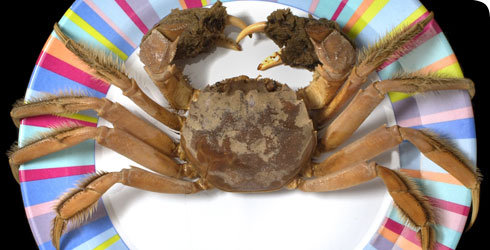Chinese mitten crabs
The Chinese mitten crab is having a significant impact on our environment. Native to Asia, the crab first arrived in Europe nearly a century ago. Since then, it has invaded numerous waterways, damaging riverbanks and it may threaten local habitats. Museum scientists have assessed whether these crabs can be controlled by fishing. They have also assessed the risk of eating mitten crabs from the River Thames and their results were announced in February 2009.
The Mitten Crab
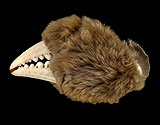
Mittens on claw of adult male crab. The function of the mittens remains a mystery, Phil Crabb.
The Chinese mitten crab was given its intriguing name because its large claws, covered by soft bristles, resemble mittens. Its scientific name (Eriocheir sinensis) derived from the Greek, means 'wool hand, the Chinese'.
This sizeable crab comes from the Far East. It spends most of its life in rivers, but must migrate to the sea to breed. Once the crabs have mated the males are thought to die, leaving the females to brood the eggs. In the spring the eggs hatch into larvae and after about six to seven weeks these metamorphose into juvenile crabs, which then migrate back up the river into freshwater to complete the life cycle.
Globe-trotting
The mitten crab can travel extraordinary distances. In China it migrates up to 1,500 kilometres along some rivers. However, shipping practices can transport the crab much further - all the way to Europe and North America.
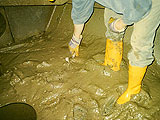
Sediment in the bottom of a ballast tank provides a good habitat for transporting animals, Stephen Gollasch.
Mitten crabs can cross oceans in the ballast of ships. Water is pumped into vast tanks to stabilise the vessel, and later discharged. In this way, animals and plants can be transported thousands of kilometres from their native habitats and deposited in a new environment.
In 1912, a large male mitten crab was discovered in a river in Germany. It was the first of many. During the 1920s and 1930s the crab flourished, spreading throughout Europe. It has invaded waterways from Scandinavia in northern Europe to the Atlantic coasts of France and Portugal in the south.
For reasons that are not understood, the populations of mitten crabs in England and North America did not at first expand like those in mainland Europe. But numbers are currently rising, prompting widespread alarm. The mitten crab is capable of causing structural problems because it can burrow into fragile mud riverbanks, riddling them with holes until they collapse.
Threat of invasion
In the right conditions, the mitten crab multiplies and spreads at an astonishing rate. The crab can even leave the water, cross dry land and enter a new river system. Its phenomenal ability to disperse is of concern to scientists in the UK because the crab could infiltrate many of the country's rivers.
Crab Control
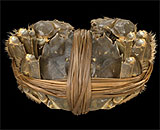
Mitten crab purchased from a street market in Hong Kong
In Asia, the mitten crab is considered a delicacy. The gonads, which ripen during migration, are particularly prized and this could be the key to controlling its expansion.
Museum scientists are involved in a project to determine whether the crabs in the River Thames are safe to eat. Current studies aim to check levels of chemical contaminants in the crabs. If they receive a clean bill of health, the crabs could be commercially fished and sold in Asia. In a curious twist, consumers of seafood may help to save our rivers.
How you can help
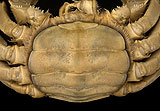
Broad, U-shaped abdomen of adult female crab to protect eggs, Phil Crabb.
If you think you have spotted a Chinese mitten crab, our scientists would love to hear from you. The more information you can provide, the more it will help them. Here are some points to look out for:
- Where and when did you see or catch the crab?
- Did you see any other crabs nearby?
- Were they alive or dead?
- Do you know what sex they were? (Tip: The male's abdomen is V-shaped, the female's is U-shaped).
- How large was it?
Contacts
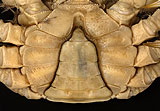
Narrow V-shaped abdomen of adult male crab, Phil Crabb.
Dr Paul Clark
Crustacean researcher, Life Sciences Department
Natural History Museum
London
SW7 5BD
Tel: +44 (0) 20 7942 5564
Email: P.Clark@nhm.ac.uk
Mitten Crab Recording Project
The Museum is part of the Mitten Crab Recording Project. By reporting your Chinese mitten crab sightings you will be helping scientists to clarify the full distribution of these alien crabs in English and Welsh rivers.
Download the mitten crab guide PDF (749.2 KB) to find out if you have seen a Chinese mitten crab.

The first collected specimen of Theobroma cacao, the plant from which chocolate is made, is kept in the Museum.
